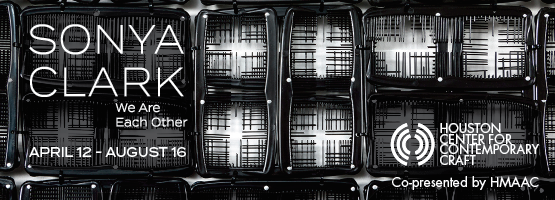When a retrospective of Jaune Quick-to-See Smith’s work arrives at the Modern Art Museum of Fort Worth in October, it might be the first time some Texas patrons will have heard of the groundbreaking artist, activist, educator, and advocate. A citizen of the Confederated Salish and Kootenai Nation, Smith is more widely known in the Southwest, as she’s based in New Mexico, or where she grew up in the Pacific Northwest and Montana, or even in New York City, where Smith has long been a fixture of the gallery scene.
Smith is a living example of what her work teaches. The history-making artist was the first Native American to join the collection at the National Gallery of Art in Washington, DC, and Memory Map is the first retrospective of work by an Indigenous artist organized by the Whitney Museum of American Art in New York City. This exhibition was displayed there from April to August 2023, before coming to Fort Worth Oct. 15, 2023-Jan. 21, 2024.
Phipps says that she and Smith had “a robust dialogue” when selecting which pieces to include in Memory Map, and that Smith was quite deliberate in telling the stories she felt needed to be told. Many of the early works, like Indian Madonna Enthroned from 1974, have rarely been on public view. To help patrons fully understand Smith’s “visual language,” the exhibition is organized more or less chronologically, beginning with 1970s and ‘80s pieces that form the building blocks of her work. Recurring imagery such as canoes, horses, bison, and flags appear, and Phipps says that years later she’s still struck by how impactful these icons can be.
“I first saw the canoe on a visual level, but as I began to know Jaune and learn why they’re used, there appeared this added depth,” says Phipps. “First, the personal: the canoe as a sign of trade. Jaune’s Salish ancestors were tradespeople, with established routes from Central Western Montana up through the Pacific Northwest and into Canada, and now she sees her work as an artist as a continuation of trade—trading in ideas, or circulating ideas like goods were in the past. Second, canoes connote movement and are containers, allowing her to explore how things move through space and time while being containers for ideas and issues she wants to talk about.”

1 ⁄6
Jaune Quick-to-See Smith. I See Red: Snowman, 1992. Oil, acrylic, paper, newspaper, and fabric on canvas, 66 × 50 in. (167.6 × 127 cm). Collection of Beth Rudin DeWoody. © Jaune Quick-to-See Smith. Photograph courtesy the artist and Garth Greenan Gallery, New York

2 ⁄6
Jaune Quick-to-See Smith. The Vanishing American, 1994. Acrylic, newspaper, paper, cotton, printing ink, fabricated chalk, and graphite pencil on canvas, 60 1/8 × 50 1/8 in. (152.7 × 127.3 cm). Whitney Museum of American Art, New York; gift of Dorothee Peiper-Riegraf and Hinrich Peiper in memory of Arlene LewAllen 2007.88. © Jaune Quick-to-See Smith. Photo courtesy Whitney Museum of American Art, New York

3⁄ 6
Jaune Quick-to-See Smith. Flathead Vest: Father and Child, 1996. Acrylic, paper, and newspaper on canvas, 60 × 50 in. (152.4 × 127 cm). Missoula Art Museum, Montana; gift of the artist. © Jaune Quick-to-See Smith. Photograph by Slikati Photo + Video; courtesy of the Missoula Art Museum

4 ⁄6
Jaune Quick-to-See Smith. Survival Suite: Wisdom/Knowledge, 1996. Lithograph with chine-collé. 36 1/16 × 24 7/8 in. (91.6 × 63.2 cm). Whitney Museum of American Art, New York; gift of Joe and Barb Zanatta Family in honor of Jaune Quick‑to‑See Smith 2003.28.1. Printed by Lawrence Lithography Workshop, Kansas City, Missouri. Published by Zanatta Editions, Shawnee Kansas. © Jaune Quick-to-See Smith. Photo courtesy Whitney Museum of American Art, New York

5 ⁄6
Jaune Quick-to-See Smith. War is Heck, 2002. Collage of lithograph and photolithograph, 58 9/16 × 57 5/8 in. (148.7 × 146.4 cm). Whitney Museum of American Art, New York; gift of Dorothee Peiper-Riegraf and Hinrich Peiper 2006.287. Printed by Catherine Chauvin, with Matt Ebert. Published by P.R.I.N.T. Press, Denton, Texas. © Jaune Quick-to-See Smith. Photo courtesy Whitney Museum of American Art, New York

6 ⁄6
Jaune Quick-to-See Smith. Grasp Tight the Old Ways, 2011. Oil, acrylic, paper, fabric, and charcoal on canvas, 72 × 48 in. (182.9 × 121.9 cm). Sheldon Museum of Art, University of Nebraska-Lincoln; Robert E. Schweser and Fern Beardsley Schweser Acquisition Fund through the University of Nebraska Foundation U-6293.2013. © Jaune Quick-to-See Smith. Photograph courtesy the artist and Garth Greenan Gallery, New York
On Oct.10, Smith and Phipps will both be at the Modern Art Museum of Fort Worth for a special Tuesday Evenings at the Modern lecture. It’s a rare opportunity for patrons to hear from both the artist and curator prior to the exhibition’s opening.
—LINDSEY WILSON





